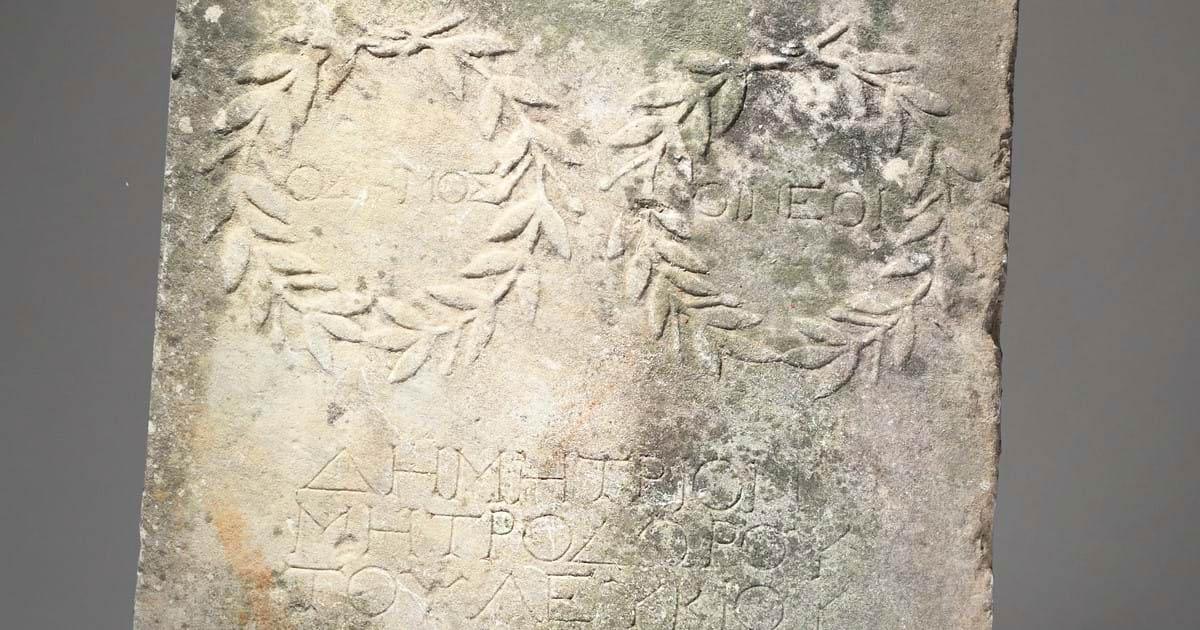
Ancient Roman Marble Used As A Step Is Worth Thousands
A carved Roman marble slab that was used as a step to mount a horse for twenty years is expected to fetch up to £15,000 ($20,400) at auction this February. The 25 inch (63.5 cm) high slab of marble was originally dug up two decades ago from an old garden rockery in the village of Whiteparish, Wiltshire. Now, an archaeologist has identified the slab as dating to the 2nd Century AD and when auctioneers Woolley & Wallis of Salisbury sell it in February it is expected to generate a price of £15,000.

Image of English country garden showing where Roman slab was discovered. (Woolley & Wallis)
How Did the Slab Reach Its Final Resting Place?
If the auctioneers and the local archaeologists’ theory is correct, how then did the slab end up beneath a garden with no apparent Roman ruins nearby? It is thought that the artifact might have been kept in either Cowesfield House, Broxmore House and Paulton's Park, the later two having been demolished in 1949, while the house at Paulton's Park was destroyed by fire in 1963. A Salisbury Journal article says the slab may have been found among rubble at one of these three sites and taken to its present location.
- Archaeologists reveal lost medieval palace beneath prehistoric fortress at Old Sarum
- Was the Massive Stone Circle of Avebury In Honor of a Humble Neolithic House? [New Report]
- Ancient Ceremonial Site 10 Times Bigger than Stonehenge Hits the Archaeological Spotlight
Will Hobbs is an antiquities specialist at Woolley & Wallis. He told the Daily Mail that artifacts of this type often came into England as the result of Grand Tours in the late 18th and 19th century, when wealthy aristocrats would tour Europe learning about classical art and culture. This being the case, the inscription was likely visible at this later date. Hobbs added that his team “assume” that is how the stone entered the UK, “but what is a complete mystery,” he says, is how it ended up in a domestic garden.

The artifact is a stunning find. (Woolley & Wallis)
Wiltshire: A Roman Treasure Chest
The discovery of an ancient Roman slab in Wiltshire isn’t all that surprising. While it was transported there in modern history, this county is a virtual treasure chest of ancient Roman artifacts from when Rome conquered what is today England and managed the territory as their outpost, Britannia. The most famous finds made in Wiltshire are exhibited at the Wiltshire Museum and include an island copper alloy Colchester derivative developed T-shaped brooch. Quite a mouthful, I know, but this unique lead inlaid treasure dates back to the Roman heydays of 75-200 AD.
An ornate decorated copper alloy Roman penannular bracelet dating to 43-99 AD and a hoard of 2,384 Roman copper-alloy coins were discovered in Pewsey, consisting of mostly 4th century (330 – 348 AD) nummi. And now, when this slab is sold in February it might join these treasures at the Wiltshire Museum, if their pockets are deep that is. For this stone is attracting serious attention.
Top image: Experts believe that the ancient Roman slab dates back to the second century AD. Source: Woolley and Wallis
By Ashley Cowie
















Comments
Would of been nice if the article included what the inscription said on the stone.
Jamie R